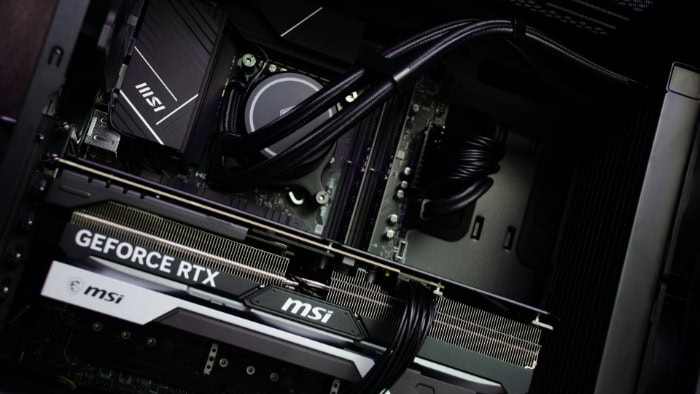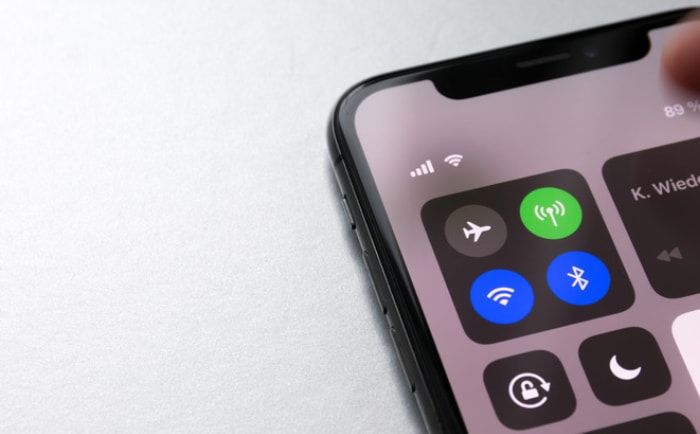What Is Refresh Rate and Why It Matters?

Flicker-free visuals and buttery-smooth motion have become the gold standard for everything from gaming to scrolling through your favorite apps. Refresh rate, often measured in Hertz, is at the heart of this seamless experience, dictating how fluidly images move across your screen.
Whether you're a gamer chasing that split-second advantage, a binge-watcher aiming for cinematic clarity, or simply someone who values a comfortable viewing experience, refresh rate is a feature you can't afford to overlook.
Core Definition and Basic Principles
Refresh rate refers to the number of times per second a display refreshes the image shown on the screen. Measured in Hertz (Hz), this value indicates the frequency with which the display redraws every pixel.
For instance, a 60Hz monitor updates sixty times each second, while a 144Hz screen does so one hundred forty-four times. Higher refresh rates generally translate to smoother motion and improved visual clarity, making fast-moving scenes in games and videos appear much less blurry or fragmented.
How It Works
Every modern display consists of a grid of pixels that must update regularly to show new content. During each refresh cycle, the display quickly redraws every pixel, even if the image on the screen has not changed.
This rapid cycling prevents flicker and allows motion to look continuous rather than choppy. Synchronization between the display’s refresh rate and the content’s update rate is vital.
When the two are out of sync, artifacts like screen tearing can appear, breaking the illusion of seamless movement. Technologies such as V-Sync, G-Sync, and FreeSync help address these issues by aligning the frame delivery from the graphics card to the refresh cycles of the screen.
Key Terminology
Several terms are closely related to refresh rate, and knowing the differences helps avoid confusion. Refresh rate, as mentioned, is how often the entire screen updates per second.
Frame rate, measured in frames per second (FPS), is the speed at which a graphics source-like a game or video-produces new images. High frame rates paired with high refresh rates provide the smoothest experience, but a mismatch can lead to stuttering or wasted performance.
Response time is another important term; it describes how quickly a pixel changes from one color or brightness level to another. Shorter response times reduce ghosting trails behind fast-moving objects, enhancing clarity in scenes with a lot of action. While all three terms matter for visual quality, each describes a different aspect of the overall experience.
Impact on Visual Performance

The quality of a display directly shapes how users perceive and interact with their devices. Refresh rate is a vital factor in this equation, heavily influencing the smoothness of motion, the delay between input and action, and overall visual comfort.
Subtle improvements in refresh rate can make a noticeable difference, making visuals clearer and interactions feel significantly more natural.
Motion Clarity
Motion clarity takes a giant leap forward as refresh rates climb. Traditional displays, such as those running at 60Hz, can sometimes struggle with fast-moving content.
Rapid on-screen action may appear blurry, and objects can leave trailing shadows behind them. Higher refresh rates, such as 120Hz or even 144Hz, refresh the image more often, making motion look much smoother and sharper.
For gamers, this means tracking fast-moving opponents becomes easier. For movie watchers and sports fans, details stay crisp during pan shots or quick camera transitions, lending a more lifelike feel to everything on the screen.
Input Lag Reduction
Quick responses can be crucial in both gaming and everyday use. Input lag is the slight delay between a user’s command and the display’s reaction.
Higher refresh rates help cut down this delay, as the screen can register and display changes from the computer or console more frequently. In competitive games, lower input lag means actions, like shooting or jumping, happen almost instantaneously after a button is pressed.
Even outside of gaming, general interface tasks-such as moving a mouse, scrolling, or typing-can feel snappier, making devices more enjoyable and efficient to use.
Eye Comfort
Smarter screens not only look better but also feel better on the eyes. Higher refresh rates contribute to comfort by reducing flicker, a subtle but tiring form of visual instability.
Flicker is more noticeable at lower refresh rates and can lead to headaches, eyestrain, or fatigue after long periods of use. Panels operating at 90Hz, 120Hz, or higher deliver a more stable, consistent image. This improvement is especially noticeable when reading, browsing, or performing tasks that require long periods of screen time.
Smoother visuals and reduced flicker translate into a more pleasant experience, letting users focus on content without discomfort or distraction.
Technical Considerations and Trade-Offs

Choosing a display with a high refresh rate can dramatically improve visual quality, but there are important technical factors and trade-offs to keep in mind. Compatibility between hardware components, effects on power consumption, and the need for special synchronization technologies all play a role in the experience you ultimately receive.
Hardware Compatibility
Not all devices or components can fully support high refresh rates. Graphics processing units (GPUs) must be powerful enough to consistently deliver the number of frames required by displays running at 120Hz, 144Hz, or beyond.
Older GPUs or entry-level models might struggle to keep up, especially in demanding games or applications. Additionally, the cables and connectors matter just as much.
HDMI 2.1 and DisplayPort 1.4 or higher are necessary for carrying high-bandwidth video signals needed for the latest high-refresh monitors, especially at higher resolutions. Even the screen itself has limits-some panels physically cannot refresh past certain speeds, so always check the specifications before pairing components together.
Power Consumption
A snappier screen comes with the cost of higher power use, especially on portable devices like smartphones, tablets, and laptops. Higher refresh rates require the display to update more often, which increases energy consumption.
Many mobile devices feature adaptive refresh rate technology that automatically adjusts the frequency based on what is being displayed. For instance, browsing static web pages uses fewer refresh cycles than watching fast-paced video, helping conserve battery life.
If sustained high refresh rates are always enabled, expect to see shorter battery runtimes.
Adaptive Sync Technologies
Screen tearing and stuttering can disrupt smooth visuals, especially when the frame rate produced by the GPU fails to match the refresh rate of the display. Adaptive sync technologies have become essential for a seamless experience.
NVIDIA’s G-Sync and AMD’s FreeSync are two of the most popular options, designed to dynamically match the monitor’s refresh rate with the GPU’s output. Variable Refresh Rate (VRR) technologies are also commonly found in modern TVs, further reducing artifacts and providing consistently fluid motion.
With these systems in place, users benefit from uninterrupted gameplay, smoother video playback, and less visual distraction during rapid scene changes.
Device-Specific Standards and Use Cases

Refresh rate requirements can vary dramatically depending on the device and how it is used. Manufacturers optimize refresh rates to deliver the best possible experience for gaming, content creation, work tasks, or entertainment, all while balancing factors like hardware limitations and power consumption.
Monitors
Monitors are available in a wide range of refresh rates to accommodate different activities. For competitive gaming, screens boasting 144Hz, 165Hz, or even 240Hz offer a distinct advantage.
Fast refresh rates minimize motion blur and provide a much smoother sense of movement, especially in fast-paced first-person shooters and action titles. Esports enthusiasts, in particular, often seek out higher refresh rates to gain those extra milliseconds of reaction time.
On the other hand, office and productivity monitors tend to stick to 60Hz or 75Hz. For everyday tasks like browsing the web, answering emails, and using productivity software, higher refresh rates rarely offer noticeable benefits.
Prioritizing color accuracy and ergonomics over refresh speed makes sense in most professional environments.
Smartphones and Tablets
Scrolling through apps or swiping across home screens feels noticeably faster and more responsive on mobile devices with high refresh rates. Modern smartphones and tablets often feature screens running at 90Hz, 120Hz, or even 144Hz.
Higher refresh rates make animations and touch responses look fluid, giving an impression of speed and smoothness throughout the operating system. Interacting with content, gaming on the go, or simply reading an article all benefit from enhanced motion clarity.
Manufacturers have embraced dynamic refresh technology that lowers the refresh rate automatically during static activities, which helps save battery life without sacrificing smoothness when needed.
Televisions
Televisions apply refresh rate standards with a focus on cinematic content and live sports. Most TVs stick to 60Hz or 120Hz panels. A 60Hz television is sufficient for most movies, which are typically filmed at 24 frames per second, as well as mainstream broadcasts.
For action-packed content or sports, 120Hz models improve motion handling and can utilize motion interpolation for smoother playback. Motion interpolation uses artificial frames to create a smoother picture, though some viewers prefer to turn it off to retain a more “film-like” look.
Gaming consoles that support high refresh rates can also take advantage of 120Hz TVs, further enhancing the gaming experience on the big screen.
Across all device categories, refresh rate is tailored to match the purpose, bringing out the best combination of visuals and usability for each unique scenario.
Optimizing Refresh Rate for Your Needs

Choosing the right refresh rate often involves balancing personal priorities, the type of content you consume, and the capabilities of your devices. Higher refresh rates can enhance smoothness and responsiveness, but they sometimes come at the expense of resolution or battery life.
Prioritization Guidelines
In scenarios where speed and fluidity matter most, such as competitive gaming, opting for a higher refresh rate generally takes precedence over higher resolution. Fast-paced games rely on quick reactions and smooth motion, so a 144Hz or 240Hz monitor can provide a competitive edge by reducing motion blur and input lag.
Conversely, in everyday tasks, office work, or media consumption, higher resolutions may offer better visual detail without the need for ultra-high refresh rates. If hardware limitations force a choice between resolution and refresh rate, focusing on a balance that suits your main activities and device capabilities usually yields the best results.
Content-Specific Recommendations
Different types of content benefit from different refresh rates. For gaming, matching the display’s refresh rate to the frame rate delivered by your graphics card produces the most seamless experience.
Many gamers aim for 60Hz as a minimum, with 120Hz and above preferred for smoother action and improved responsiveness. Movies and TV shows traditionally play at 24 frames per second or multiples like 48fps.
A 60Hz or 120Hz display can handle this content well, with 120Hz panels offering the added advantage of smoother motion through frame interpolation. General use such as browsing, office work, and casual video watching generally feels comfortable on standard 60Hz displays.
Devices with adaptive refresh rates can adjust on the fly to optimize both smoothness and power consumption depending on the activity.
Conclusion
Refresh rate plays a significant role in shaping how modern displays look and feel, directly influencing motion clarity, responsiveness, and overall comfort. Higher refresh rates have brought smoother gameplay, crisper scrolling, and less eye strain, ultimately creating a more engaging and enjoyable experience across computers, smartphones, and televisions.
Before making a choice, consider what matters most to you-fast action for gaming, stunning detail for movies, or balanced efficiency for everyday use. Weigh your priorities alongside your device’s capabilities and your budget.
Striking the right balance ensures your display performs exactly the way you want, letting you enjoy everything you watch and play with smooth, satisfying visuals.


